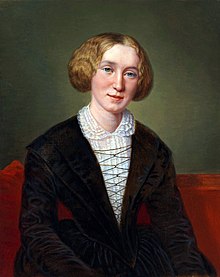User talk:Dictabeard
Welcome to Wikisource
Hello, Dictabeard, and welcome to Wikisource! Thank you for joining the project. I hope you like the place and decide to stay. Here are a few good links for newcomers:

- Help pages, especially for proofreading
- Help:Beginner's guide to Wikisource
- Style guide
- Inclusion policy
- Wikisource:For Wikipedians
You may be interested in participating in
Add the code {{active projects}}, {{PotM}} or {{Collaboration/MC}} to your page for current Wikisource projects.
You can put a brief description of your interests on your user page and contributions to another Wikimedia project, such as Wikipedia and Commons.
Have questions? Then please ask them at either
I hope you enjoy contributing to Wikisource, the library that is free for everyone to use! In discussions, please "sign" your comments using four tildes (~~~~); this will automatically produce your username if you're logged in (or IP address if you are not) and the date. If you need help, ask me on my talk page, or ask your question here (click edit) and place {{helpme}} before your question.
Again, welcome! — billinghurst sDrewth 10:21, 12 December 2010 (UTC)
The King in Yellow[edit]
Wikipedia has a section covering the connection between the story and the Cthulhu Mythos: w:The King in Yellow#Cthulhu Mythos. The first two paragraphs contain most of the details:-
H.P. Lovecraft read The King in Yellow in early 1927 and included passing references to various things and places from the book—such as the Lake of Hali and the Yellow Sign—in "The Whisperer in Darkness" (1931), one of his seminal Cthulhu Mythos stories. Lovecraft borrowed Chambers' method of only vaguely referring to supernatural events, entities, and places, thereby allowing his readers to imagine the horror for themselves. The imaginary play The King in Yellow effectively became another piece of occult literature in the Cthulhu Mythos alongside the Necronomicon and others.
In the story, Lovecraft linked the Yellow Sign to Hastur, but from his brief (and only) mention it is not clear what Lovecraft meant Hastur to be. August Derleth developed Hastur into a Great Old One in his controversial reworking of Lovecraft's universe, elaborating on this connection in his own mythos stories. In the writings of Derleth and a few other latter-day Cthulhu Mythos authors, the King in Yellow is an avatar of Hastur, so named because of his appearance as a thin, floating man covered in tattered yellow robes.
So, The King in Yellow pre-dates the Cthulhu Mythos but was included after the fact. As the quoted text mentions, Lovecraft mentions the Yellow Sign in The Whisperer in Darkness, especially Chapter 2 and Chapter 5. Derleth renewed the copyrights on his own work, so those stories are not yet in the public domain. - AdamBMorgan (talk) 19:41, 12 December 2010 (UTC)
- Regarding Category:Cthulhu Mythos, you could create a sub-category just for the Lovecraft stories (Wikipedia uses the term "Lovecraft Mythos" for these) but at the moment The King in Yellow is the only non-Lovecraft story in there. If you are going to do this, it might be better to add more texts to the main category first so it isn't left empty (there are some more on Wikisource, so this is possible). Alternatively, this might be better solved with a portal rather than a category. I have just split Portal:Cthulhu Mythos out of Portal:Horror, if you want to work on it. - AdamBMorgan (talk) 19:08, 17 December 2010 (UTC)